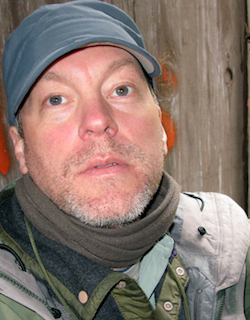08 Sep Sable Horse Removal Society – updated
Eco-provocateur* Ian Jones, a seabird biologist at Memorial University in St. John’s NL, is demanding Parks Canada remove the fabled feral horses of Sable Island on the factually correct grounds they are an exotic, invasive species that has seriously altered the island’s ecology.
The CBC quotes Jones as saying Parks Canada is obliged to remove them because of a stipulation in part 3.2, section 11 of the Canada National Parks Act:
All practical efforts will be made to prevent the introduction of exotic plants and animals into national parks and to eliminate or contain them where they already exist.

Biologist Ian Jones
If making Sable Island a national park forces the Government of Canada to remove its beloved horses, that would certainly rank as the first big unintended consequence of park status. (The first big intended consequence has been the institutionalization of tourism by the wealthy and well-connected, another development fraught with ecological consequences.)
Park status may not require exotic horse removal, however, since the act appears to contain no “part 3.2, section 11,” and a text search of the legislation failed to turn up any passage resembling the words Jones quoted. (I have emailed him for a clarification, and will post an update when I hear back.)
[UPDATE] The passage Jones refers to is not in the Canada National Parks Act, but in a statement of “Parks Canada Guiding Principles and Operational Policies,” that was tabled in the House of Commons 20 years ago by then Heritage Minister Michel Dupuy. The specific section cited by Jones can be found here, at 3.2.11. The Canada National Parks Act, an act of Parliament, can only be changed by another act of Parliament. An operational policy can be changed by fiat of the Minister of Environment. Big difference.
Meanwhile, in email messages to Contrarian and the National Post Sunday afternoon, Prof. Bill Freedman, a Dalhousie University ecologist with extensive experience on Sable and a keener appreciation than Jones of the politics of Sable horse removal, brought the hyperventilated discussion back to earth:
There is no consensus among ecologists and others working on Sable Island about the desirability of removing the horses. The scientists that I know, who are working with the horses on the island, have never told me that they would like to see the animals removed.
The horses have been on the island for centuries, and I believe the ecosystem in now in a steady-state condition with respect to their ecological effects.
There are more than 500 horses on the island. It is unlikely they would all be adopted if taken off the island, so the most likely outcome would be a lethal cull. Bot no one in a position of responsibility or authority is talking about doing that.
At the present time, and into the foreseeable future (several decades, anyway), I do not think that any significant action will be taken to greatly reduce the population of horses on Sable Island. However, if responsible authorities were to try to do anything, it would likely be non-lethal means such as birth control.
In pure ecological terms, Jones may be correct: the horses of Sable have undoubtedly altered the island from its pristine, pre-contact state in the 16th Century. However, Sable horse lovers are legion, and there is not a Canadian politician of any stripe who cares enough about pure ecology to risk their wrath.
Parks Canada eventually plans to undertake public consultation on management plan for the island.
* See a further rebuttal from Jones here., including his demurral regarding the ‘eco-provocateur’ appellation.
